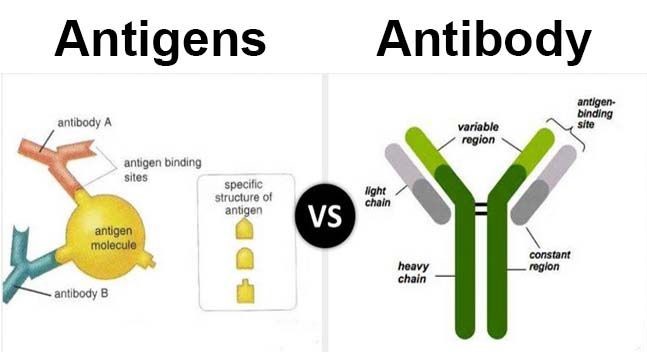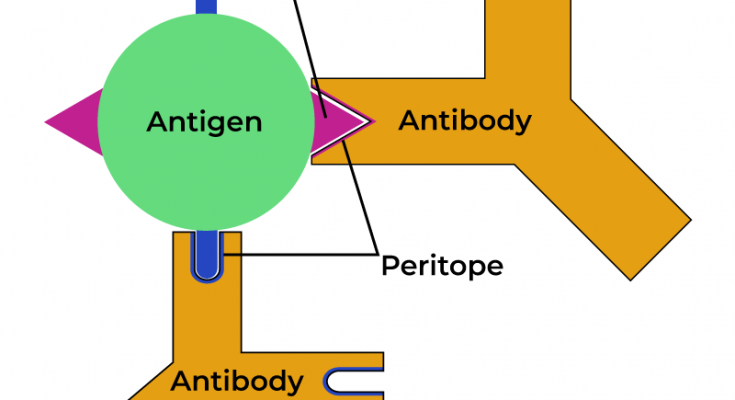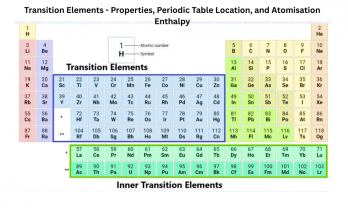Antigens and Antibodies are core elements of the immune system. Antigens are molecular structures recognized as foreign, capable of triggering immune responses. Antibodies are glycoproteins produced by B lymphocytes to bind and neutralize Antigens. Their interaction is the foundation of adaptive immunity, contributing to immune surveillance, pathogen clearance, immunological memory and vaccine-induced protection.
Table of Contents
Antigens
Antigens are molecules capable of eliciting an immune response. They may be derived from external sources, such as viruses, bacteria, toxins, or environmental allergens, or from within the body, as seen in autoimmune diseases. The immune system identifies these substances based on distinct molecular patterns known as epitopes, which are specific structural regions on the antigen’s surface.
Antigens can be-
- Exogenous– Entering the body via inhalation, ingestion, or infection.
- Endogenous– Formed within cells, presented via major histocompatibility complex (MHC) molecules.
- AutoAntigens– Self-Antigens that, under pathological conditions, are targeted by the immune system.
Antigens vary in chemical composition and may be proteins, polysaccharides, lipids, or nucleic acids. Among these, proteins are generally the most immunogenic due to their structural complexity and ability to form conformational epitopes.
Also Check – Antigen and Pathogen – Differences, Definitions and Functions
Antibodies
Antibodies, or immunoglobulins, are glycoproteins secreted by plasma cells, which are differentiated B lymphocytes. Their primary role is to recognize and bind to specific Antigens, thereby neutralizing them or marking them for destruction by other components of the immune system.
Each antibody consists of-
- Two identical heavy chains and two identical light chains, linked by disulfide bonds.
- Variable regions that form the antigen-binding sites, known as paratopes.
- Constant regions that determine the antibody’s class (isotype) and function.
Antibody binding is highly specific, depending on the structural compatibility between the antibody’s paratope and the antigen’s epitope. This specificity underlies the precision of the adaptive immune response.

Comparison Table- Antigens vs. Antibodies
| Aspect | Antigens | Antibodies |
| Terminology | Also called immunogens | Also called immunoglobulins |
| Molecular Composition | Proteins, lipids, carbohydrates, nucleic acids | Glycoproteins composed of amino acid chains |
| Functional Role | Trigger immune response | Neutralize or eliminate Antigens |
| Recognition Site | Epitopes– molecular features recognized by Antibodies | Paratopes– regions that bind specific epitopes |
| Biological Origin | External or internal (e.g., pathogens or self-Antigens) | Produced internally by activated B cells |
| Types/Subtypes | HeteroAntigens, autoAntigens, alloAntigens | IgG, IgA, IgM, IgE, IgD |
| Specificity | May have multiple epitopes; diverse in form | Each antibody is specific to one epitope |
| Immune Mechanisms | Activate immune system; may lead to hypersensitivity or autoimmunity | Tag Antigens for destruction, neutralization, or complement activation |
Detailed Differences Between Antigens and Antibodies
1. Terminology
Antigens are substances that elicit an immune response. The term “immunogen” emphasizes their role in activating adaptive immunity.
Antibodies are antigen-specific glycoproteins produced by B cells. The term “immunoglobulin” reflects their globular protein structure and immune function.
2. Molecular Composition
Antigens are chemically diverse. They may consist of proteins, polysaccharides, lipids, or nucleic acids. The structural complexity of protein Antigens enhances their ability to interact with immune receptors.
Antibodies are proteins composed of four polypeptide chains—two heavy and two light chains—arranged in a Y-shape. The antigen-binding site is formed by the variable regions at the tips of the molecule.
3. Biological Role
Antigens are the initiators of immune responses. When detected as foreign, they activate innate and adaptive immunity, leading to inflammation, antibody production, or cytotoxic responses.
Antibodies function as effectors. They bind specifically to Antigens to neutralize toxins, inhibit pathogen adhesion, agglutinate particles, or activate the complement system, aiding in antigen clearance.
4. Binding Specificity and Site
Antigens present epitopes, which are short sequences or conformational features recognized by Antibodies or T-cell receptors. An antigen may contain multiple epitopes.
Antibodies contain paratopes, the complementary antigen-binding regions located in the variable domains of the heavy and light chains. The specificity of the paratope ensures precise recognition of a single epitope.
5. Origin
Antigens are typically exogenous (from viruses, bacteria, pollen, etc.) or endogenous (in autoimmune diseases or cancer).
Antibodies are synthesized endogenously by plasma cells, primarily within secondary lymphoid organs, after antigen recognition.
6. Types and Subclasses
Antigen Types–
- heteroAntigens– Foreign substances such as microbes.
- AutoAntigens– Self-Antigens, misrecognized in autoimmune disorders.
- AlloAntigens– Variants found in individuals of the same species (e.g., blood group Antigens).
Antibody Classes–
- IgG– Most abundant; long-term immunity; crosses placenta.
- IgM– First antibody formed in response; efficient in complement activation.
- IgA– Found in mucosal secretions; protects against pathogens at entry points.
- IgE– Involved in allergic reactions and defense against parasitic infections.
- IgD– Functions primarily as a receptor on immature B cells.
7. Specificity
Antigens are often complex and contain multiple distinct epitopes. Each epitope can be recognized by a unique antibody or T-cell receptor.
Antibodies exhibit monospecificity- each antibody binds to a single, specific epitope, enabling targeted immune responses with minimal off-target effects.
8. Immune Action
Antigens stimulate immune recognition and response. Their presence leads to cytokine secretion, lymphocyte activation and, when uncontrolled, hypersensitivity or autoimmunity.
Antibodies participate in-
- Neutralization– Blocking pathogens or toxins from binding to host cells.
- Opsonization– Coating Antigens for recognition by phagocytes.
- Agglutination– Clumping particles for easier clearance.
- Complement Activation– Triggering lytic pathways for antigen destruction.
Frequently Asked Questions (FAQ)
1. What are Antigens and how do they initiate immune responses?
Antigens are molecular structures recognized as non-self. Their interaction with immune cells activates signaling pathways leading to inflammation, antibody production, or cellular immune responses.
2. What are Antibodies and what is their function?
Antibodies are immunoglobulins secreted by plasma cells. They bind specifically to Antigens to neutralize, opsonize, or eliminate them via immune effector mechanisms.
3. What is the difference between epitopes and paratopes?
Epitopes are regions on Antigens recognized by the immune system. Paratopes are the binding sites on Antibodies that interact with these epitopes. The interaction is specific and non-covalent.
4. Where do Antigens and Antibodies originate?
Antigens may originate externally or from within the body in pathological states. Antibodies are produced internally by B lymphocytes in response to antigen exposure.
5. What are the types and functions of Antibodies?
- IgG– Provides long-lasting immunity and crosses the placenta.
- IgM– First responder; activates complement.
- IgA– Guards mucosal surfaces.
- IgE– Mediates allergic reactions and defense against parasites.
- IgD– Involved in B cell receptor signaling.
6. How do vaccines leverage the antibody response?
Vaccines introduce antigenic material that primes the immune system without causing disease. This exposure leads to the generation of memory B cells and Antibodies, enabling rapid response upon real infection.
Conclusion
Antigens and Antibodies are central to immune recognition and defense. Antigens initiate immune reactions through epitope presentation, while Antibodies counteract these threats through specific binding and immune activation. Their interaction underlies the development of immune memory, disease resistance and therapeutic strategies such as vaccination and antibody-based treatments.


